Siedliszcze
Borough of Siedliszcze , Chełmski District, Lubelskie VoivodshipType of place
Jewish cemetery in SiedliszczeInformation about the crime
“The ghetto in Siedliszcze was established on 1 June 1940. The entire Jewish population of the town of about 2,500 people was confined there. The ghetto’s inhabitants worked mainly on land reclamation and to regulate the Mogielanka river for the Wasserwirtschaft Inspektion [German Water Management Board] In April 1942, nearly 3,000 Jews from Czechoslovakia were brought to Siedliszcze. Already in May, they began to be transported to the extermination camp in Sobibór”. (Figiel, 2011)
According to the Questionnaire on Mass Executions and Mass Graves from the second half of the 1940s, it appears that 120 people were murdered in Siedliszcze in 1943. Among the victims were local and Czech Jews as well as Gipsies and local farmers. (IPN Gk 163/13)
The 1957 Bulletin of the The Chief Commission for the Examination of German Crimes in Poland states that “120 people, Poles, Jews and Gypsies, were murdered in the area of Siedliszcze in 1940-44”. The crime was committed by the military policemen from Cyców. The remains of the victims were buried in a cemetery (no information on which one) and in a field.
From subsequent documents we learn that the bodies were buried in the Roman Catholic and Jewish cemeteries. The victims were to be transported from the local labour camp and the surrounding villages. (IPN Bu 2448/553)
The Register of Killing Sites and Crimes mentions an execution in 1941, when “the Germans shot about 50 people near the building of the dormitory. Among the victims were Poles, Soviet prisoners of war and Jews. There is no information about the place of burial”. (The Register of Killing Sites and Crimes committed by the Germans in Poland between 1939 and 1945, chełmskie province, Warsaw, 1986)
Commemoration
The place of the grave was marked with a wooden matzevah in 2022 as part of the project “Reference points – marking 24 Jewish war graves with wooden matzevot”. The project is an attempt to find a way of marking these places before they can be commemorated. Marking forgotten Jewish war graves with wooden matzevot is a subtle intervention in the landscape reminding about what remains invisible, yet present in the memory of local communities. Being only a temporary commemoration, wooden matzevot invite local communities to discuss and take action, to discover the places, and perhaps to start their own memory practice related to them or to initiate a permanent commemoration.
You can read more about the project here: https://tinyurl.com/2p9ar52f
The project was implemented thanks to the funding from The Association of the Jewish Historical Institute of Poland (Stowarzyszenie Żydowski Instytut Historyczny) and The Matzevah Foundation.


IDENTIFICATION OF THE GRAVE BASED ON NON INVASIVE RESEARCH
On June 1, 2020, a site inspection was carried out in the Jewish cemetery to determine the location of the mass graves. The probable location of the grave was marked by a witness (approximate GPS coordinates:N 51°11’42.01 “E 023°09’31.65”).
The LiDAR survey shows clear soil disturbances in the southern part of the cemetery. A large depression near the southern border of the cemetery and many other smaller disturbances suggest with a high probability that there may be mass graves of various sizes in this area.
Aerial photography query for this area wasn’t ordered.
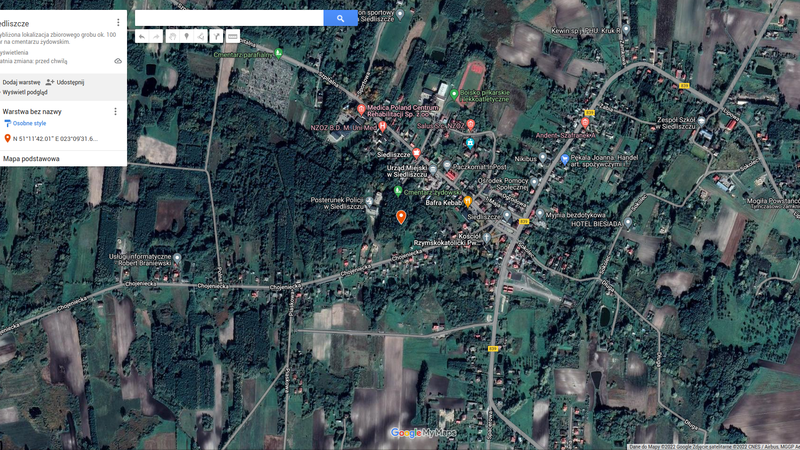 Siedliszcze fotografia satelitarna 1a
Siedliszcze fotografia satelitarna 1a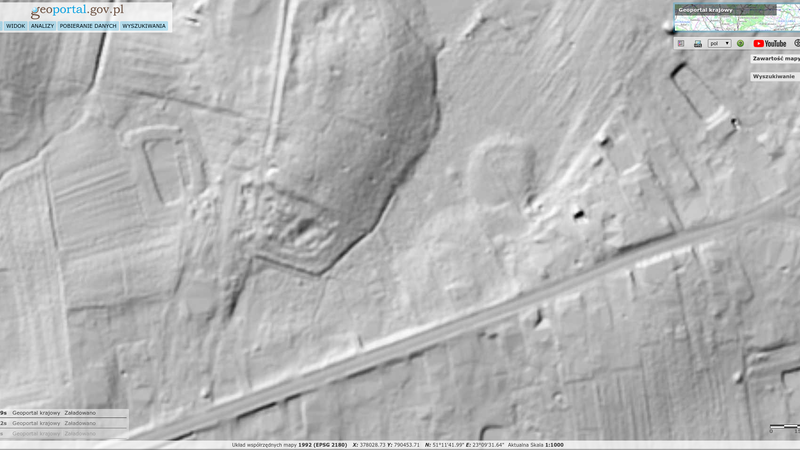 Siedliszcze LiDAR 1
Siedliszcze LiDAR 1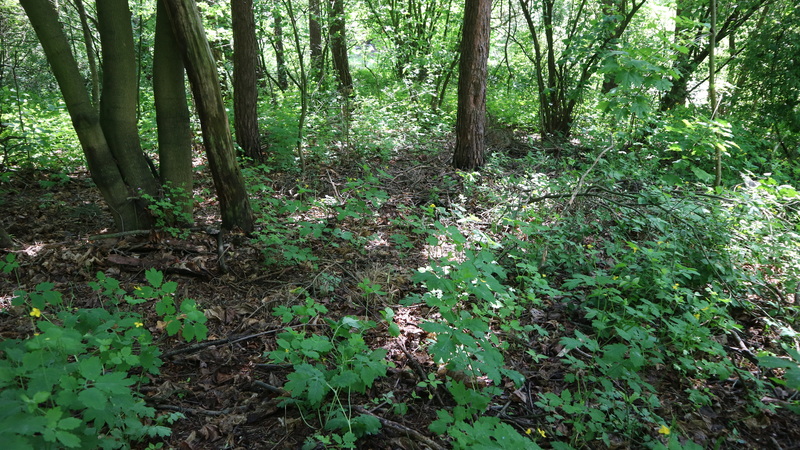 Siedliszcze fotografia 1 lokalizacji
Siedliszcze fotografia 1 lokalizacjiSources
Contact and cooperation
We are still looking for information on the identity of the victims and the location of Jewish graves in Siedliszcze. If you know something more, write to us at the following address: fundacjazapomniane@gmail.com.
Bibliography
Grzegorz Figiel, Siedliszcze, stan badań, źródła archiwalne i ikonograficzne dotyczące dziejów miasta i gminy, Siedliszcze-Chełm, 2011, p. 130
Grzegorz Figiel, Robert Kozyrski, Aleksandra Kuczyńska Od prehistorii do współczesności. Odkrywanie lokalnej tożsamości mieszkańców Siedliszcza, Siedliszcze, 2011, pp. 231-232
IPN BU 2448/553 Questionnaires on victims of Jewish nationality in the town of Siedliszcze, Chełm Lubelski district from the collection of questionnaires of The Chief Commission for the Examination of German Crimes in Poland
IPN BU 2448/555 Questionnaires on victims of Jewish nationality in the town of Siedliszcze, Chełm Lubelski district from the collection of questionnaires of The Chief Commission for the Examination of German Crimes in Poland
IPN Gk 195/VIII/6 Document on victims of Jewish nationality in Siedliszcze from the collection of Scout Alerts on the sites of German crimes in Poland, chełmski district.
IPN Gk 174/456 Excerpt from the results of the survey on German crimes committed in Chełm Lubelski (also regarding the town of Siedliszcze) from the collection of The Regional Commission for the Examination of German Crimes in Cracow.
The Register of Killing Sites and Crimes committed by the Germans in Poland between 1939 and 1945, chełmskie province, Warsaw, 1986
Bulletin of The Chief Commission for the Examination of German Crimes in Poland, Warsaw, 1957, p 184
IPN GK 163/13 Questionnaire on mass executions and mass graves in the lubelskie province, districts: Chełm, Hrubieszów, Krasnystaw
We have collected the materials about this village thanks to the funding provided by the International Holocaust Remembrance Alliance as part of the project “The rural Holocaust. Collecting and safeguarding the never recorded testimonies 100 forgotten Jewish graves 2021-2022”. The materials for this website were developed, digitized and made available as part of the project “Development of a digital archive of Jewish war graves outside the extermination camps and educational use of archive resources” thanks to funding from the Minister of Culture and National Heritage from the Cultural Promotion Fund.
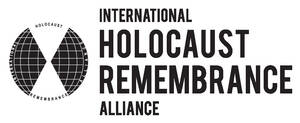
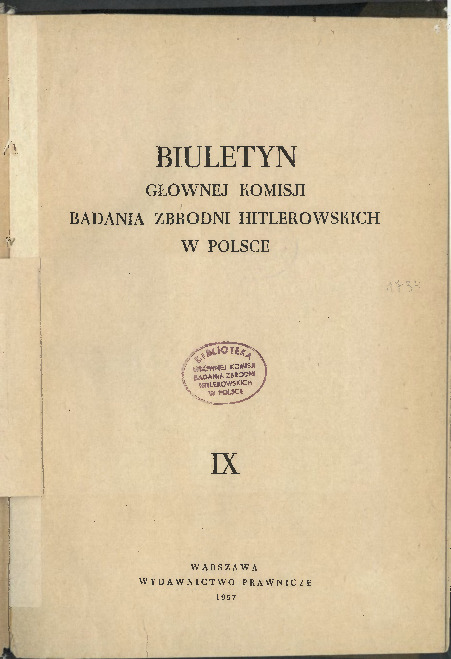 Biuletyn Głównej Komisji Badania Zbrodni Hitlerowskich w Polsce, IX - Siedliszcze
Biuletyn Głównej Komisji Badania Zbrodni Hitlerowskich w Polsce, IX - Siedliszcze